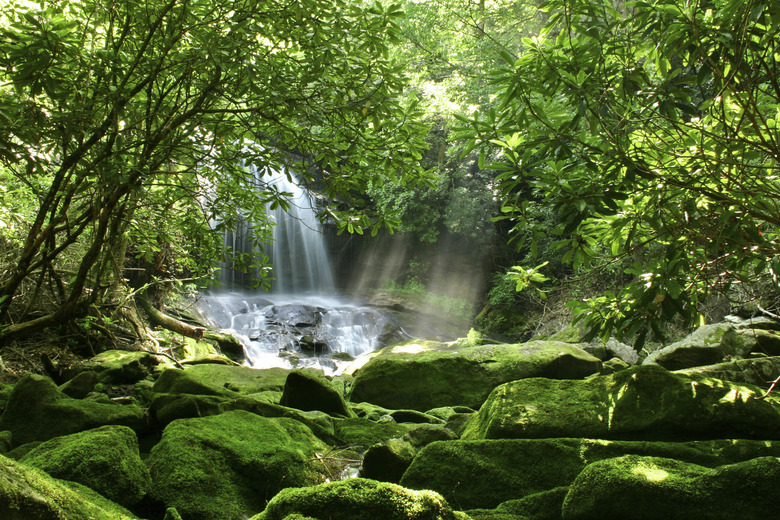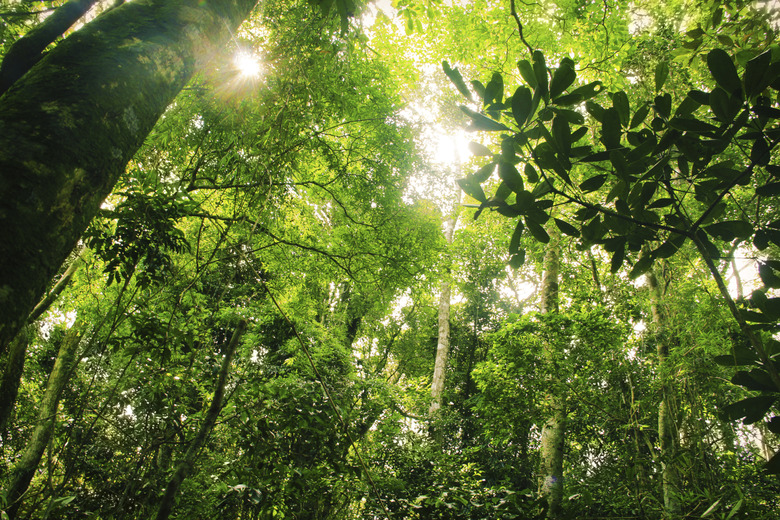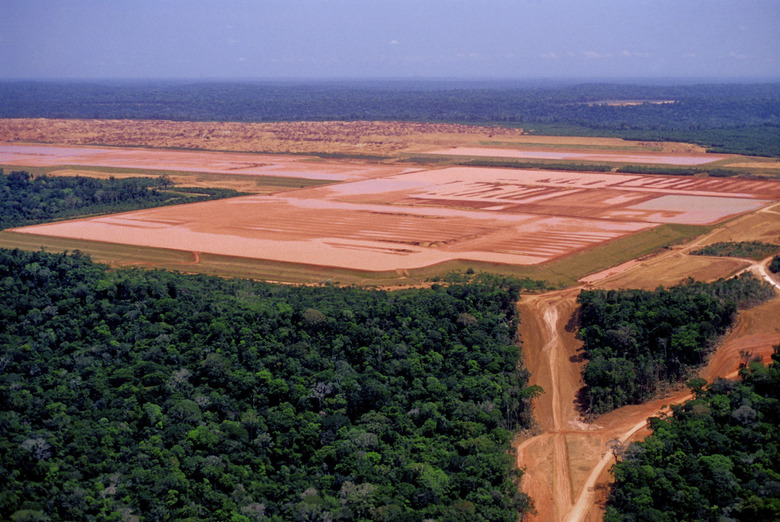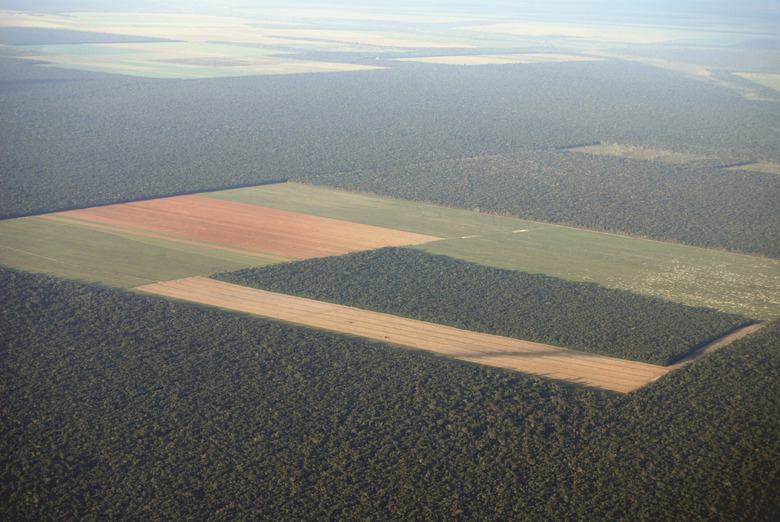Positive Human Impacts On Rainforests
The greatest threat to rainforest destruction are human activities like logging, commercial agriculture, poaching and climate change. But despite the harm that humans wreak on the rainforest, it's largely up to them to see to it that rainforests continue to exist. The negative impacts are well-documented, but humans are also having a positive effect on rainforests as well.
Reducing Demand
Reducing Demand
Nonprofit groups like Rainforest Relief are working to end the destruction of the world's tropical and temperate rainforests by attempting to reduce the demand for rainforest logging. A big part of its mission is persuading consumers to stay away from buying tropical hardwoods, which come from the rainforest. The group hopes that less demand for these woods will reduce rainforest logging, or eliminate it altogether. As of 2011, Rainforest Relief has prevented the potential use of more than 12 million board feet of tropical hardwoods.
Conservation Initiatives
Conservation Initiatives
While groups like Rainforest Relief aim to curb rainforest destruction by persuading consumers to purchase sustainable woods, other groups like the World Wildlife Fund are hoping to do so by an increased focus on conservation. Specifically, WWF focuses on protecting critical land areas, like rainforests, and critical species, like rainforest animals, so that humans and nature can live in harmony in a sustainable world. To accomplish this, they have partnered with various governments to enforce stricter policies.
Medicine
Medicine
According to the website Rain-Tree.com, there are an estimated 3,000 plants on Earth that can be used to actively fight cancer cells. About 70 percent of these plants are found in the rainforest; 25 percent of the ingredients in today's cancer-fighting medications are solely found in the rainforest. Harvesting such plants and other sustainable rainforest resources can be more valuable to the human race than if the rainforests were to be destroyed for wood. If rainforests were destroyed altogether, humans would lose this natural pharmacy.
Cultures and Knowledge
Cultures and Knowledge
Rain-Tree.com states that in the 1500s, up to 9 million people called the Amazon rainforest their home. They lived in the forests, fed off its nuts and fruits, and lived as one with nature. As of 2011, there are 25,000 people living there and their disappearance could mean the loss of age-old cultural traditions, knowledge and one of the world's few sustainable cultures. Supporting rainforests and sustainably harvesting its resources can help grow these native cultures and be of more benefit to humanity than eliminating it, as these indigenous cultures continue to demonstrate.
Cite This Article
MLA
Cornell, Scott. "Positive Human Impacts On Rainforests" sciencing.com, https://www.sciencing.com/positive-human-impacts-on-rainforests-12513147/. 25 October 2017.
APA
Cornell, Scott. (2017, October 25). Positive Human Impacts On Rainforests. sciencing.com. Retrieved from https://www.sciencing.com/positive-human-impacts-on-rainforests-12513147/
Chicago
Cornell, Scott. Positive Human Impacts On Rainforests last modified March 2, 2019. https://www.sciencing.com/positive-human-impacts-on-rainforests-12513147/




